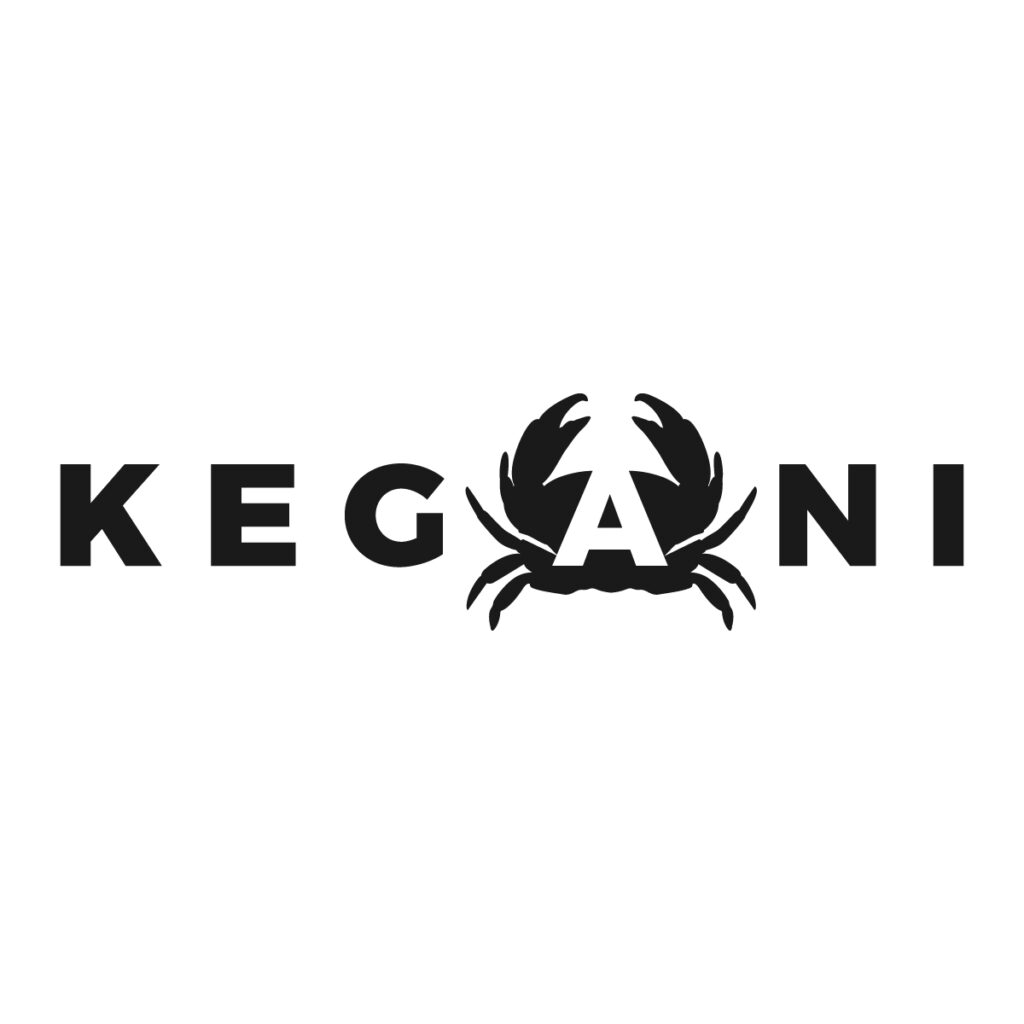Imagine holding two knives – one with a Grivory handle, the other G10. They look similar, but the difference in feel could be the deciding factor for your customers. Grivory, a high-tech nylon, offers feather-light handling and impressive shock resistance. G10, a fiberglass-resin powerhouse, delivers unmatched strength and all-weather performance. Each material tells a different story in the hand of the user.
But which one will tell the best story for your brand? Will your customers appreciate the lightweight comfort of Grivory or the robust durability of G10? And crucially, how will your choice affect your profit margins?
Join us as we slice through the confusion and sharpen your understanding of these cutting-edge materials. In this article, we’ll explore the key properties, advantages, and potential drawbacks of both Grivory and G10, equipping you with practical insights to make the best choice for your knife business.
Let’s dive in!
Overview of Grivory and G10
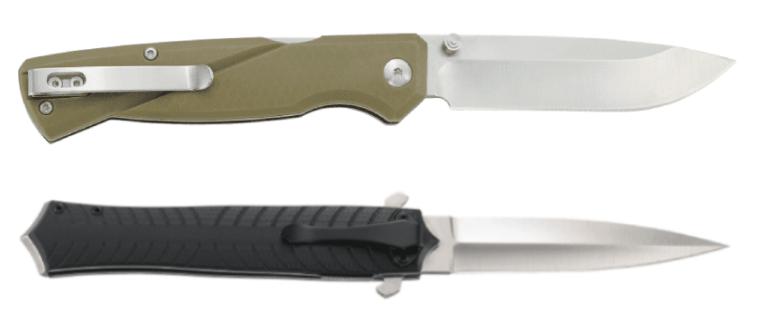
Grivory and G10 are popular materials for knife handles. Let’s take a closer look at what makes them special.
Grivory is a type of Fiber Reinforced Nylon (FRN). It’s lightweight and durable, similar to the plastic used in high-end sports gear. You’ll often find it on everyday carry knives.
G10 is different. It’s made from layers of fiberglass soaked in resin. Think of it like a super-strong sandwich. G10 is tough and moisture-resistant, making it great for outdoor knives.
Both materials come in different colors. You can find Grivory in solid shades, while G10 can have cool layered patterns.
Remember, the right handle depends on your customers’ needs. Consider their preferences and the knife’s purpose when making your choice.
Grivory vs G10: similarities and core differences
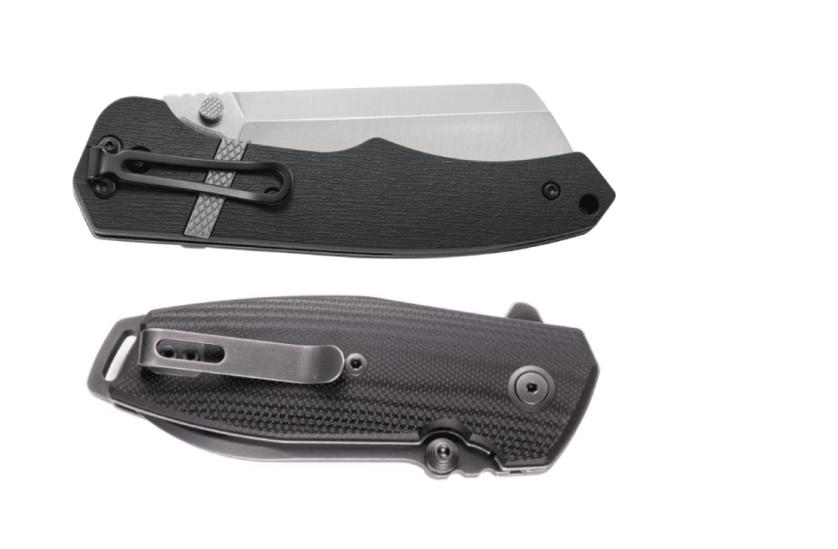
In this section, we’ll explore the fundamental similarities and differences between these two materials, providing a clear understanding and solid foundation for comparing them on a broader scale.
Similarities
Both are composite materials
Grivory and G10 are composite materials. This means they combine different materials to create something stronger. By mixing reinforcing materials with resin, they are stronger and more durable than standard materials.
Glass fiber reinforcement
Both Grivory and G10 contain glass fibers. These fibers make the materials stronger and more rigid. They also help resist wear and tear, making both materials suitable for knife handles.
If you're curious about this paper-based, eco-friendly alternatives like Micarta , check out our guide about Richlite Knife Scales.
Start Working with a Professional Now
Differences
Resin type
The biggest difference between Grivory and G10 is the type of resin used.
- Grivory: Grivory uses nylon as its base resin. Nylon is a thermoplastic, which means it can be melted and reshaped when heated. This makes Grivory easy to mold and recyclable.
- G10: G10 uses epoxy resin, a thermosetting polymer. This type of resin forms permanent bonds when heated. Once cured, it cannot be melted or reshaped. G10 is very strong but not recyclable.
Glass fiber concentration
The use of glass fibers in both materials significantly affects their performance.
- Grivory: Grivory has glass fibers added in lower concentrations. This makes Grivory handles feel softer and more comfortable.
- G10: G10 uses a higher concentration of glass fibers, greatly enhancing its strength and rigidity. This results in a tougher material that can endure heavy use and resist wear better than Grivory.
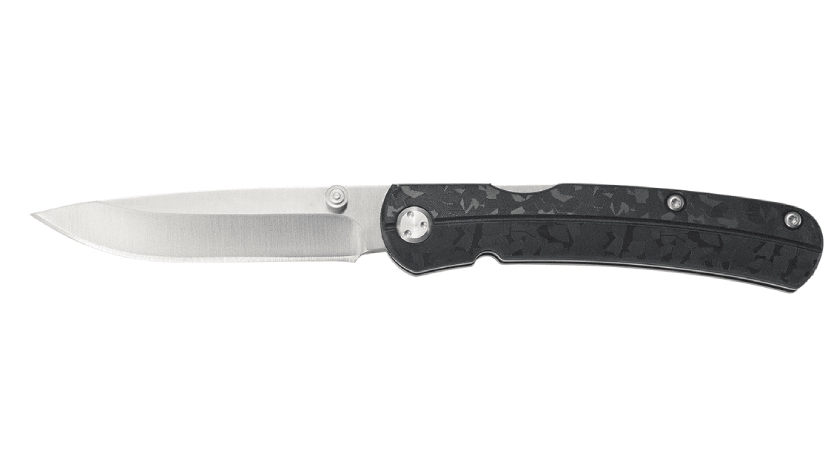
Manufacturing process
The way Grivory and G10 are made differs.
- Grivory: Grivory is typically made using injection molding. In this process, melted Grivory is injected into molds to create specific shapes.
- G10: G10 is made by layering glass fiber cloth soaked in epoxy resin. This layered material is then cured under high heat and pressure.
Essential characteristics
The different base materials of Grivory and G10 lead to distinct performance traits in knife handles.
- Grivory: Grivory, being a thermoplastic, is more flexible. The nylon in Grivory allows for a smoother surface.
- G10: G10’s epoxy base creates a more rigid material. G10’s complex manufacturing process increases its cost, but more durable.
Here’s a table that compares Grivory vs G10 based on their essential similarities and differences:
| Feature | Grivory | G10 |
|---|---|---|
| Material Type | Composite material using nylon | Composite material using epoxy resin |
| Glass Fiber Reinforcement | Contains glass fibers in lower concentrations than G10, resulting in softer feel and less overall toughness. | Contains a higher concentration of glass fibers, resulting in greater strength and rigidity. |
| Manufacturing Process | Injection molding, more economical | Layering and curing under heat and pressure, more laber-intensive |
| Recyclability | Recyclable | Not recyclable |
| Best Use Cases | Ideal for budget-friendly knives, kitchen tools | Best for heavy-duty knives and premium brands |
These fundamental differences create a spectrum of performance outcomes, influencing factors like grip, weight, and overall feel.
Grivory vs. G10: Head-to-head comparison
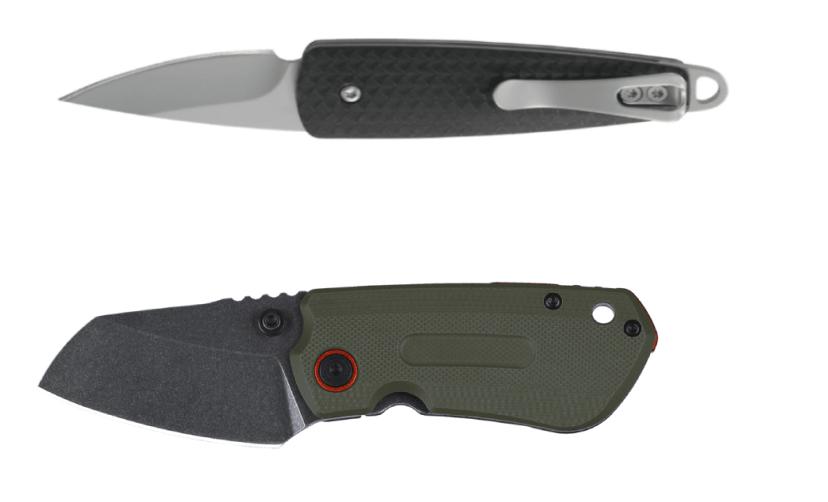
To truly understand the implications of these material differences, let’s pit Grivory and G10 against each other in a head-to-head comparison:
Weight and Feel
Grivory is the lightweight champ. You’ll notice it’s about 20% lighter than G10. This makes Grivory great for everyday carry knives where every ounce counts. G10, while heavier, gives you a more solid, premium feel in your hand.
Durability
Both materials can take a beating, but in different ways. Grivory bends under pressure, making it less likely to chip if you drop your knife. G10 is stiffer and might chip, but it’s tougher and more resistant to scratches, making it an excellent choice for various pocket knife uses.
Grip
G10 often has a rougher texture, giving you a super secure grip even with wet hands. Grivory is smoother but can be molded with patterns for added grip. It’s a bit gentler on your hands during long use.
Customization
G10 is the winner for looks. You can find it in many colors and patterns. Some G10 handles have beautiful layered designs. Grivory has fewer color options but can be molded into more complex shapes.
Cost
Your wallet might prefer Grivory. It’s generally cheaper to produce, which can mean lower prices for you. G10 costs more but many knife enthusiasts feel it’s worth the extra investment.
| Feature | Grivory | G10 |
| Weight | 20% lighter | Heavier |
| Durability | Flexible, resists chipping | Rigid, scratch-resistant |
| Grip | Smoother, comfortable | Rougher, very secure |
| Customization | Limited colors, complex shapes | Many colors/patterns |
| Cost | More affordable | Premium pricing |
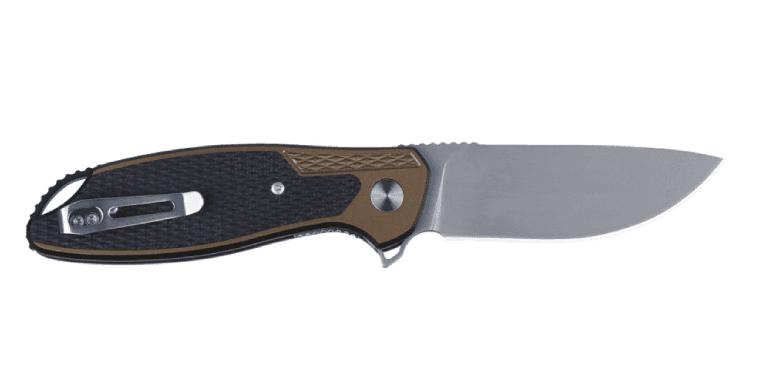
Pros and cons of G10 and Grivory
To summarize the key points and aid in decision-making, here’s a concise list of pros and cons for each material:
G10 Pros
- Superior strength and rigidity
- Excellent durability in harsh conditions
- Wide range of color and pattern options
- High-end, premium feel
G10 Cons
- Higher cost
- Heavier weight
- Potential for chipping under extreme impact
- Not recyclable
Grivory Pros
- Lightweight
- Cost-effective
- Excellent impact resistance and flexibility
- Easier to mass-produce complex shapes
Grivory Cons
- Less premium feel
- Limited color options
- May flex more than desired for some users
- Can be less durable in extreme conditions compared to G10
Use cases and applications
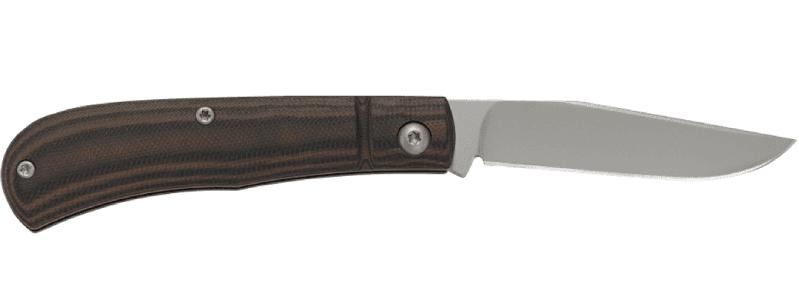
Grivory and G10 handle materials shine in different types of knives. Let’s look at where each excels.
Folding knives
Folding knives often use Grivory for lightweight everyday carry (EDC) options due to its excellent plasticity, available in various blade shapes to suit different needs.
You’ll also find it in many affordable pocket knives. G10, on the other hand, is common in in high-end folders, tactical knives, and even some automatic knives.
Fixed blade knives
For fixed blade knives, Grivory works well in light outdoor and camping blades. G10 is tougher, making it great for heavy-duty survival and hunting knives.
Kitchen knives
In the kitchen, Grivory is Less common, but may appears in some budget-friendly knife sets. G10 is gaining popularity in premium chef’s knives due to its durability.
Tactical and survival knives
Tactical and survival knives often use G10 for its strength and grip. Some lightweight tactical folders may use Grivory to reduce weight.
Sourcing considerations for wholesalers and retailers

As a wholesaler, retailer, or brand looking to source knives from Chinese manufacturers, there are several factors to consider when choosing between Grivory and G10 handles.
A. Target market and price point
- Consider your target customers and their preferences.
- Grivory may be more suitable for budget-conscious consumers.
- G10 can appeal to enthusiasts and professionals willing to pay for premium materials.
B. Product positioning
- Decide whether you want to emphasize lightweight design or premium feel.
- Grivory is ideal for products marketed as lightweight and practical.
- G10 is better suited for high-end, durable, and professional-grade knives.
C. Production volume and timelines
- Grivory handles can be produced more quickly and in larger volumes.
- G10 handles may require longer production times, especially for custom designs.
D. Customization options
- If unique colors and patterns are important, G10 offers more possibilities.
- For complex handle shapes, Grivory’s injection molding process may be advantageous.
E. Quality control measures
- Implement strict quality control for both materials, but pay extra attention to:
- Consistency in Grivory’s fiber distribution
- Proper layering and bonding in G10 handles
F. Regulatory compliance
- Ensure that both materials meet relevant safety and environmental regulations in target markets, and be aware of pocket knife laws in different regions.
Kegani: Your source for quality chinese knives
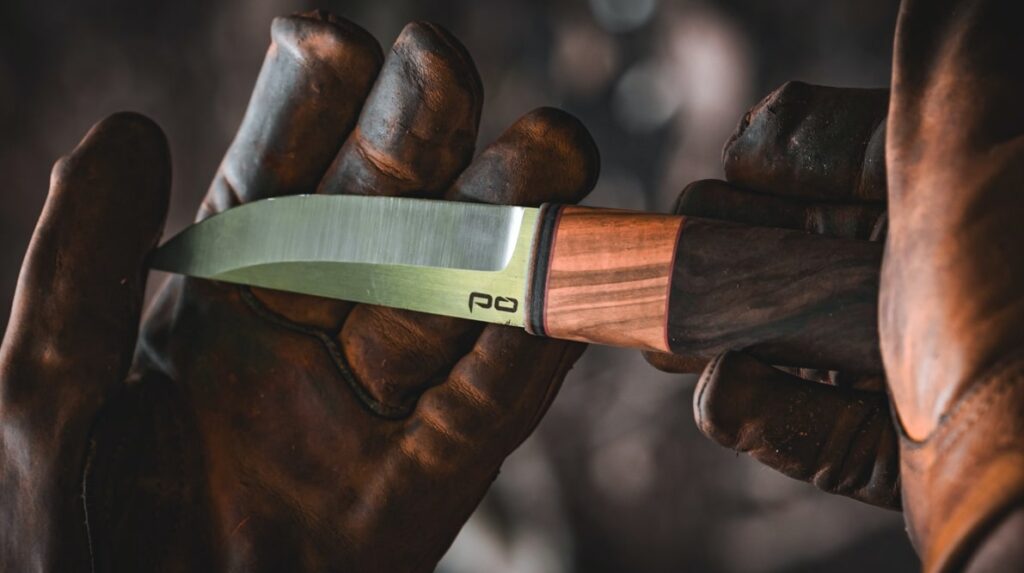
Looking for top-notch Chinese knives? Keganico has you covered. We offer a wide range of high-quality knives with various handle materials, including Grivory and G10.
Our team of experts carefully selects each knife for its quality and performance. You can choose from:
We understand that different users have different needs. That’s why we offer knives with both Grivory and G10 handles. Each material has its strengths, so you can pick the one that suits you best.
Need customization? No problem! We offer private label services to help your brand stand out. From unique designs to special packaging, we’ve got you covered.
For businesses looking to stock up, our wholesale service provides great value. You’ll get top-quality knives at competitive prices.
Want something truly unique? Our OEM service lets you create custom knives from scratch. Your ideas, our expertise – it’s a winning combination.
Contact us for sourcing high-quality knives with unique scales that suit your market needs perfectly.
